Abstract
1 Melperone, a butyrophenone tranquillizer, caused bradycardia in vivo and in vitro. 2 Although Melperone had alpha-adrenoceptor antagonist activity in the pithed rat, it was not a beta-adrenoceptor antagonist, nor was it a cholinoceptor agonist. 3 The bradycardic action could be attributed almost entirely to a prolongation by Melperone of action potential duration (APD) in sinus node cells, with little effect on the slow diastolic depolarization. 4 APD was prolonged by Melperone in atrial and ventricular muscle, and most of all in the bundle of His, but only moderately in the terminal Purkinje cells. 5 In all cardiac tissues depolarized by fast inward current. Melperone caused a dose-related reduction in the maximum rate of depolarization and conduction velocity. On desheathed frog nerve Melperone had a local anaesthetic potency equal to that of procaine. 6 There was no negative inotropic effect in cardiac muscle, nor interference with A-V nodal conduction, from which it was inferred that Melperone did not restrict slow inward current. 7 Melperone did not reduce hypoxic shortening of APD relative to the initial value at the start of hypoxia, but because APD was already lengthened by Melperone in normoxic conditions, APD90 during hypoxia remained close to normal values. There was no protection against hypoxic depression of contractions. 8 It was concluded that Melperone had class 1 and class 3 antiarrythmic actions and merited trial as an antiarrhythmic drug.
Full text
PDF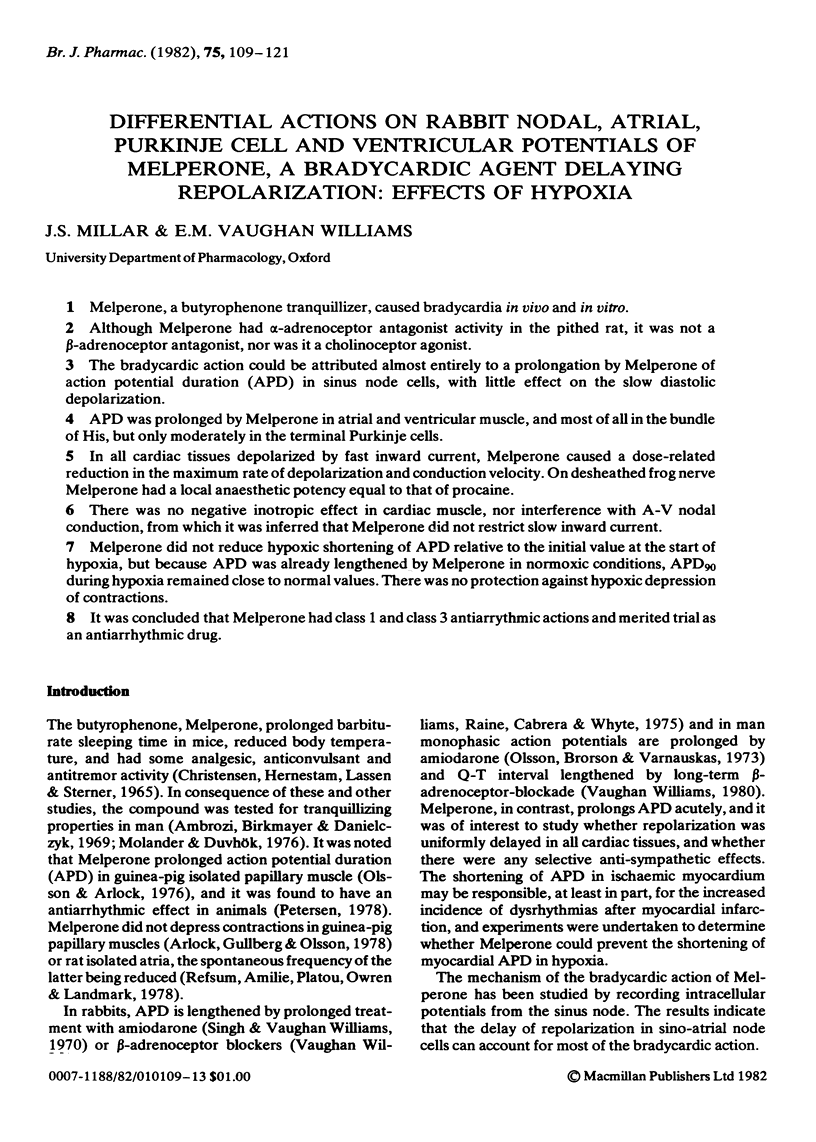
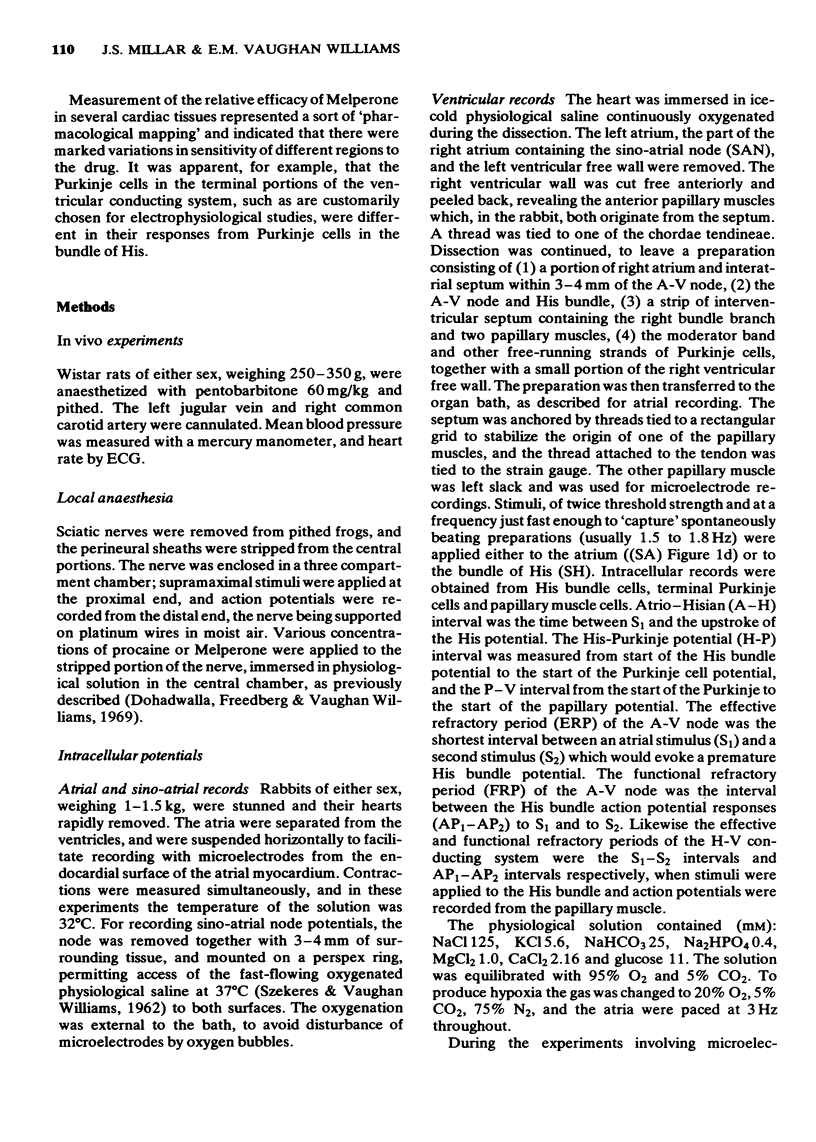
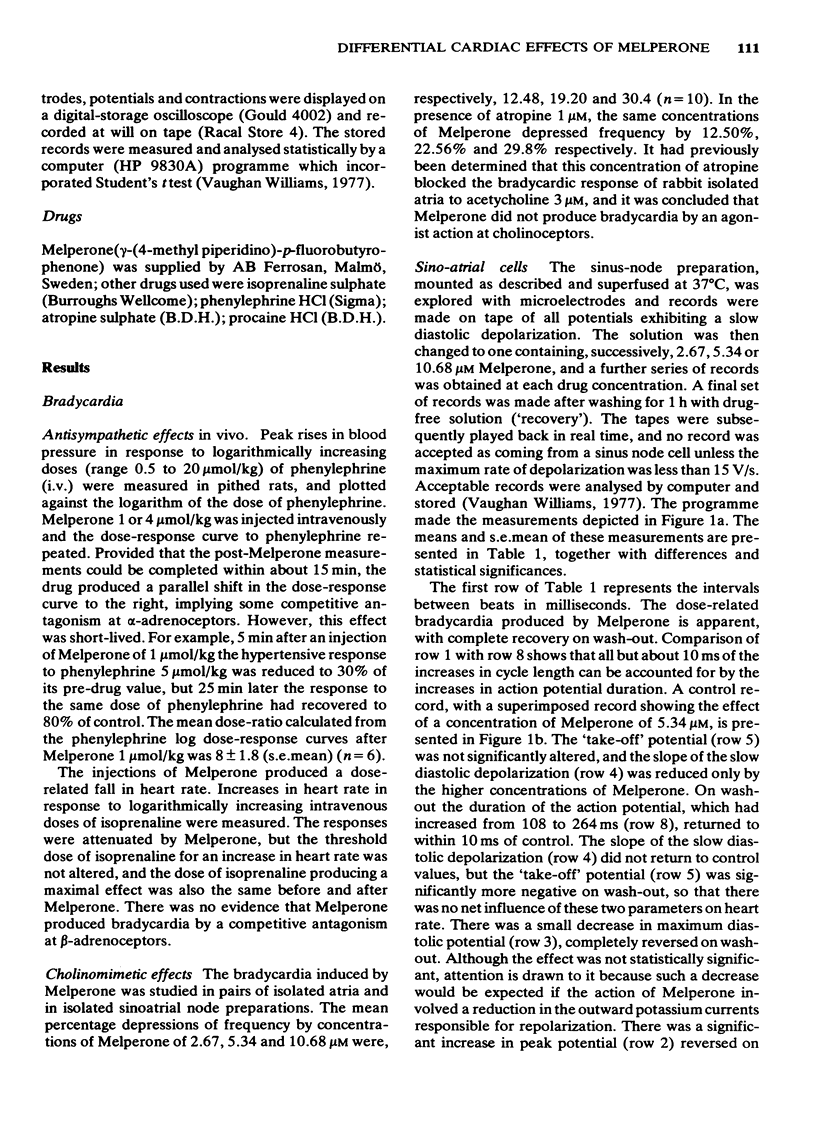
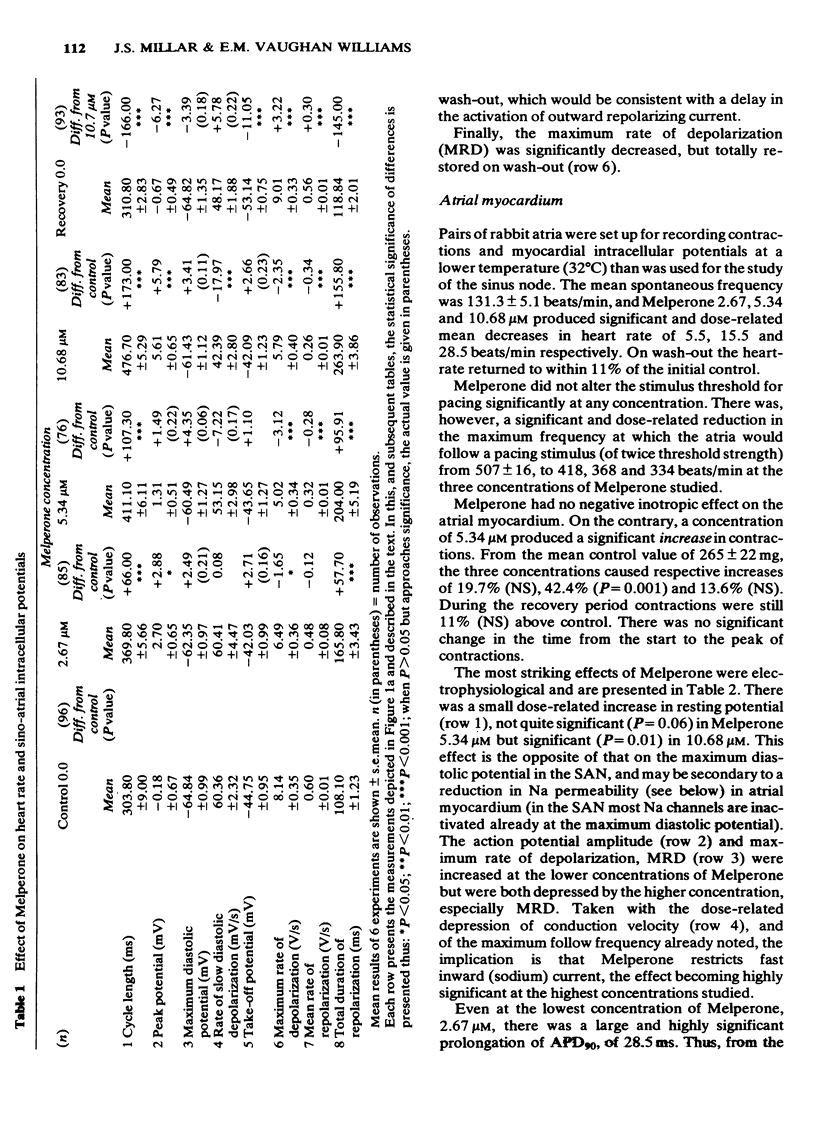
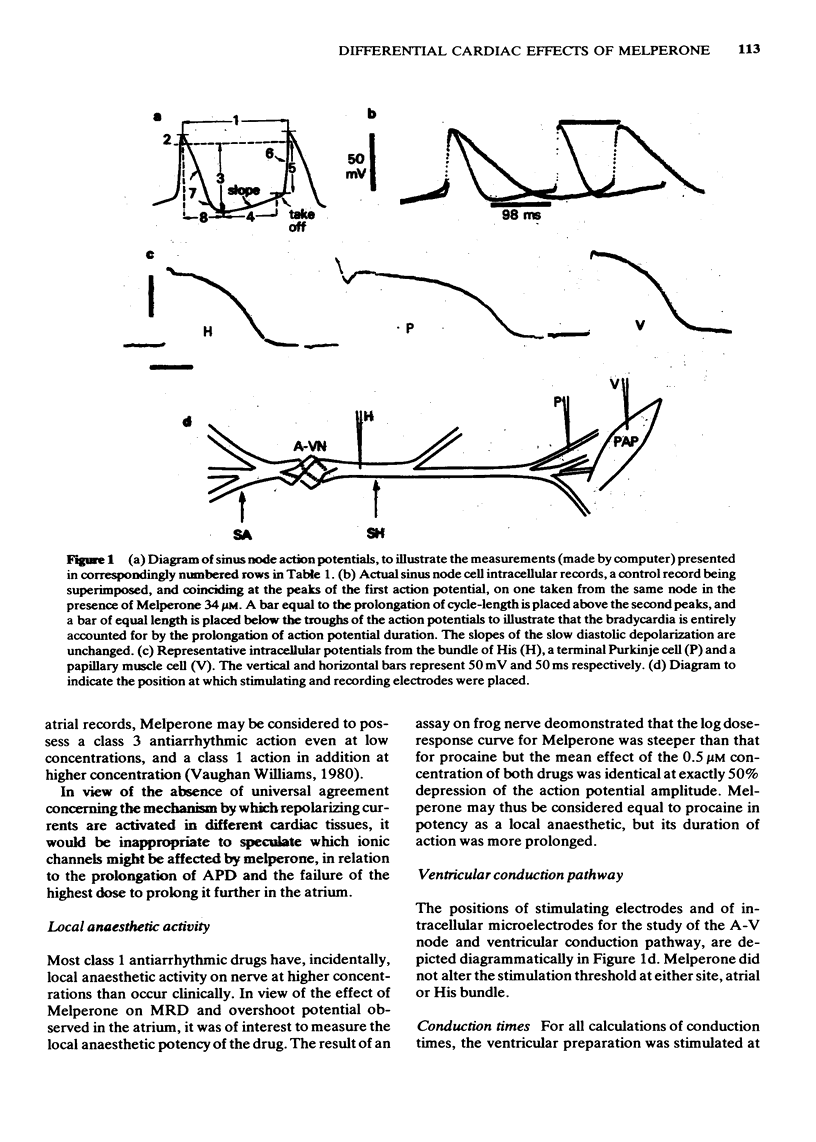
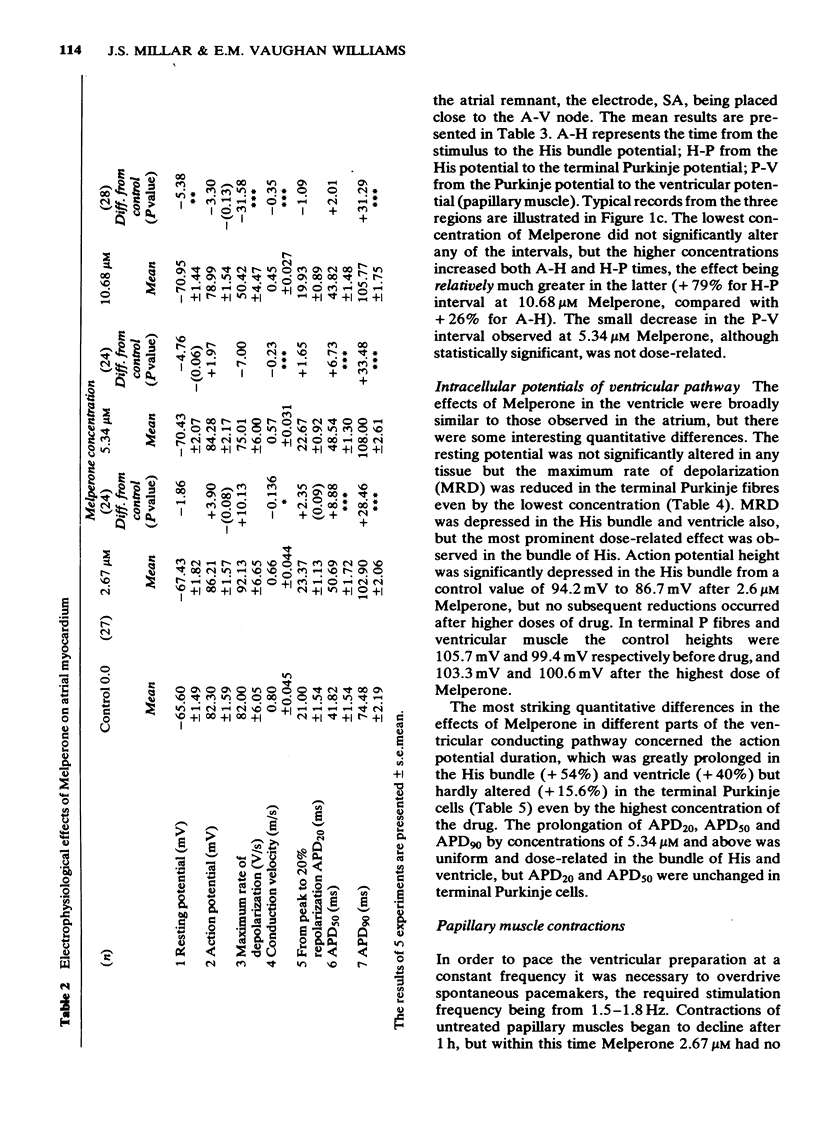
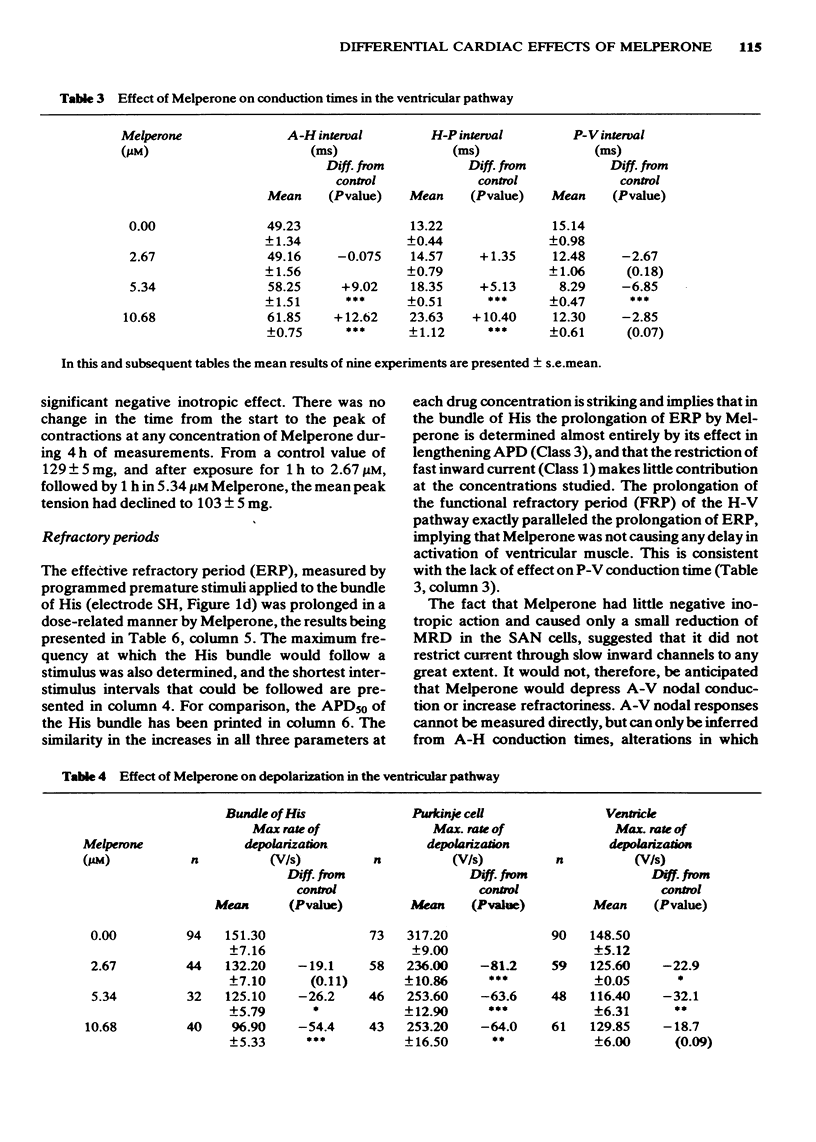
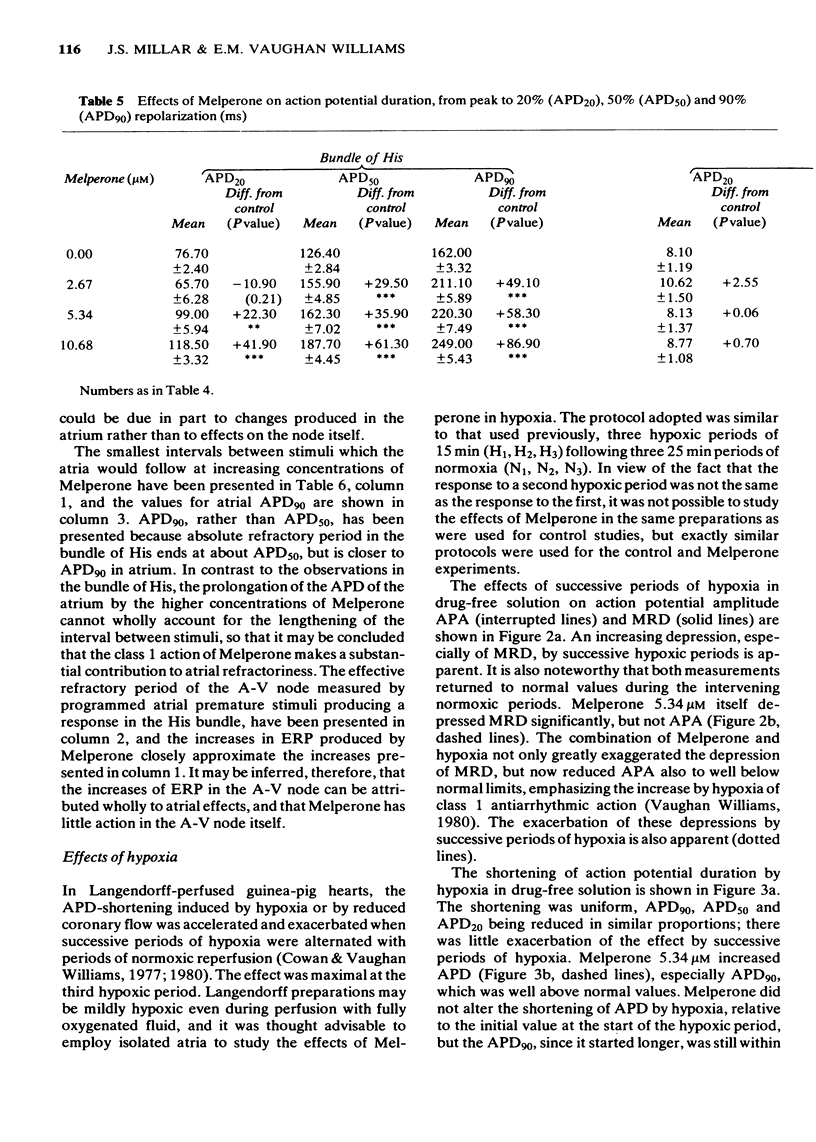
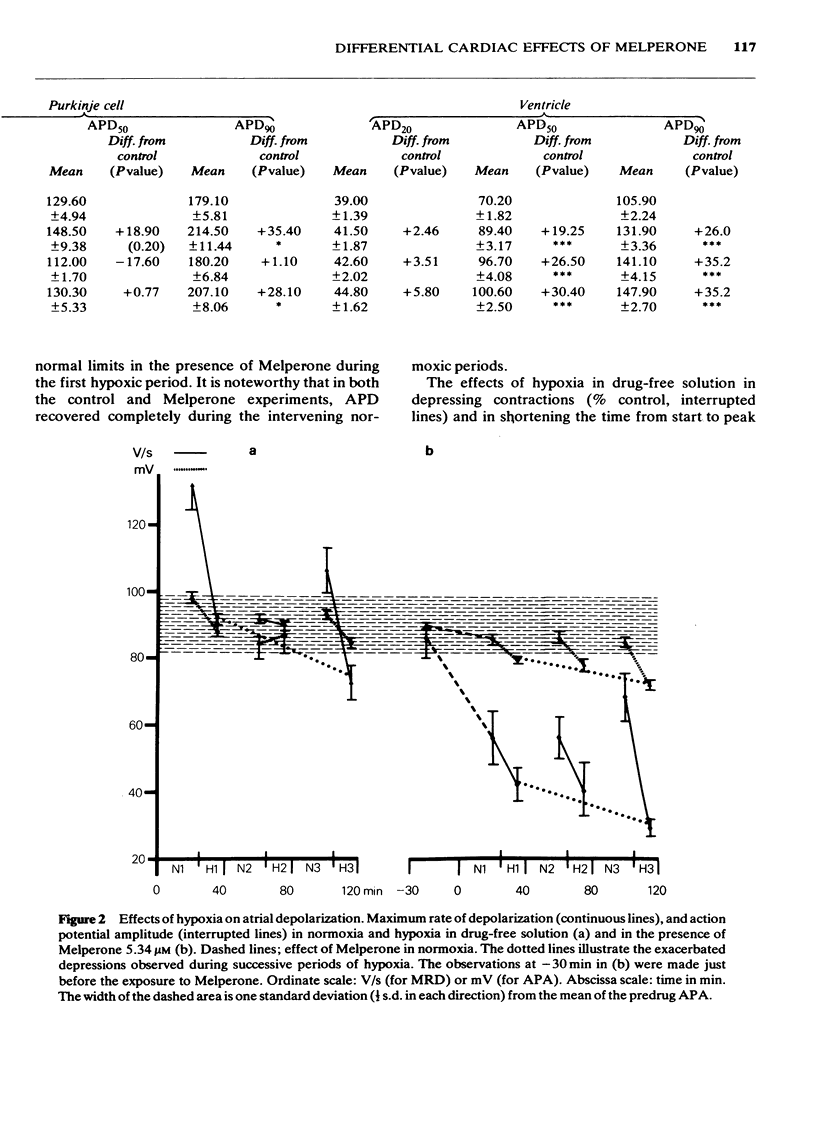
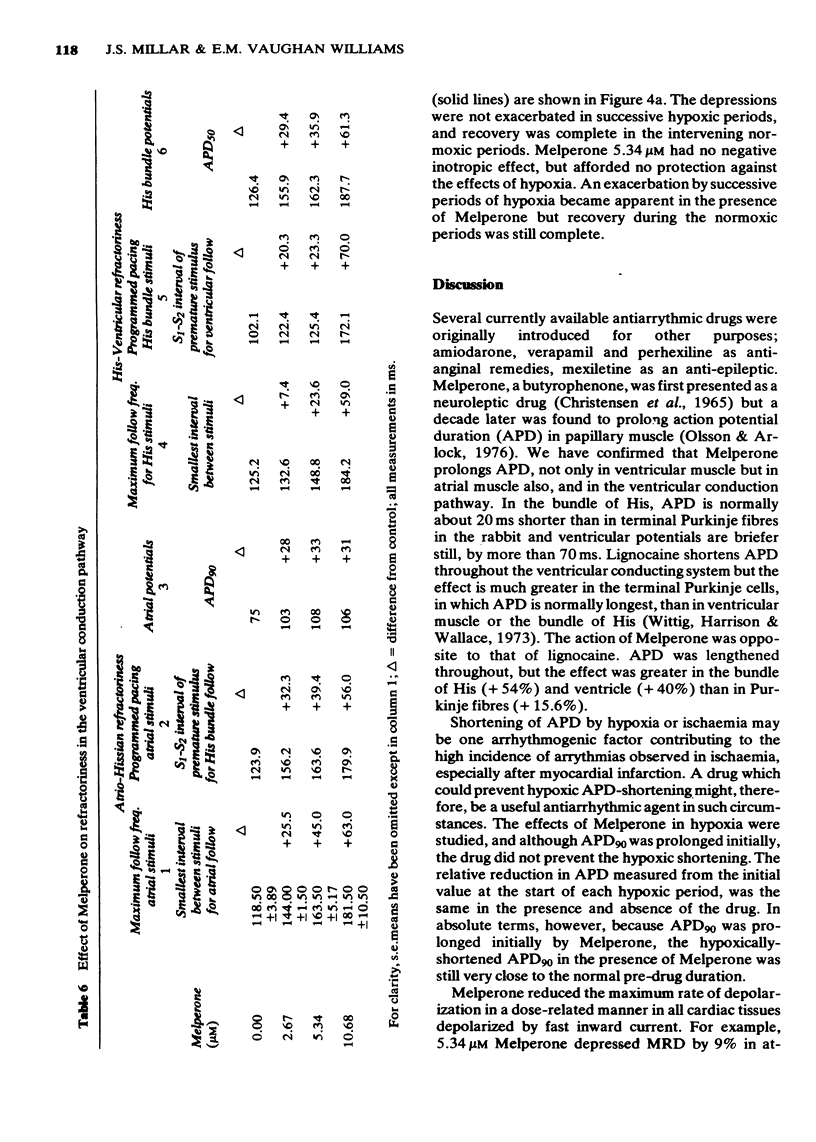
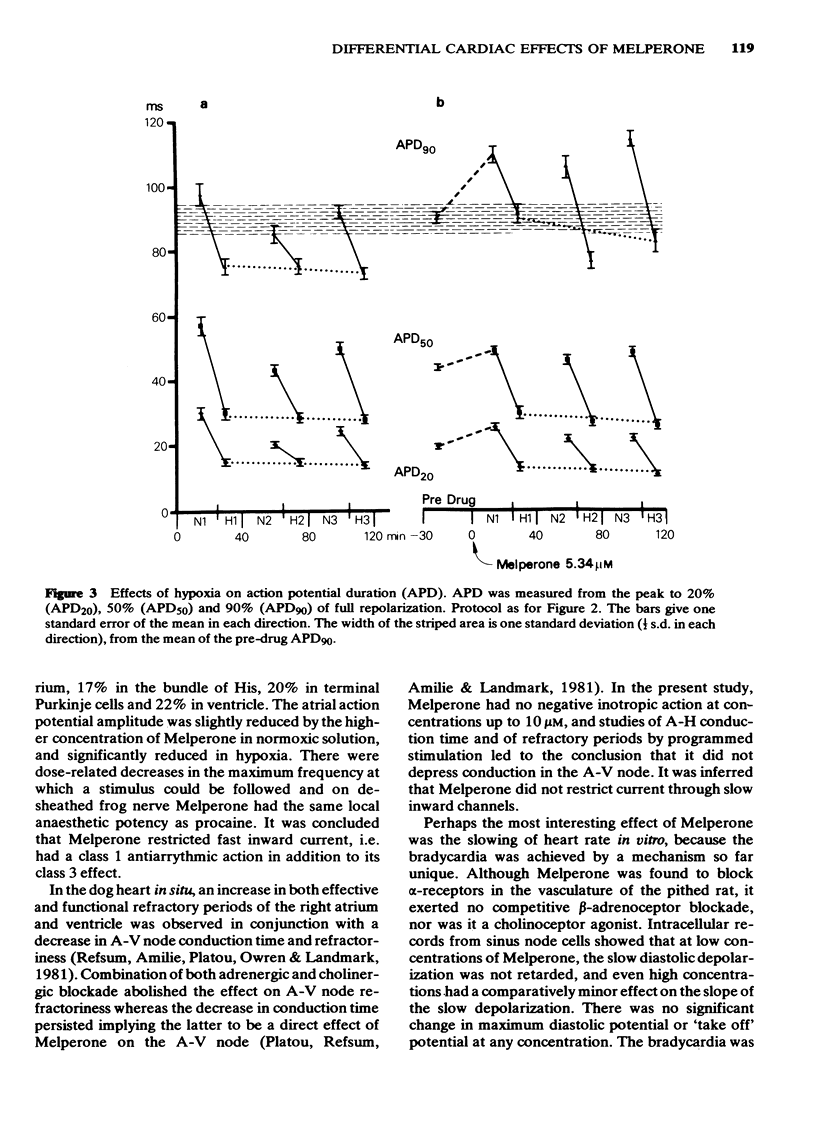
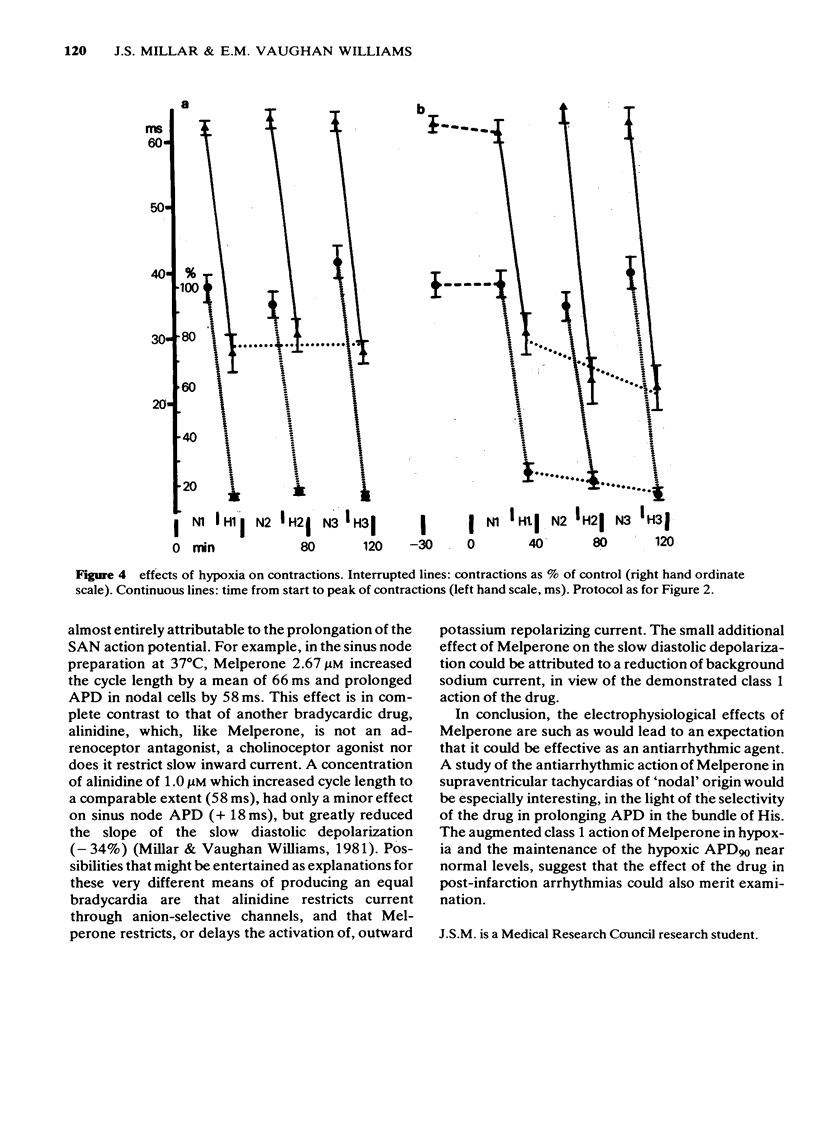
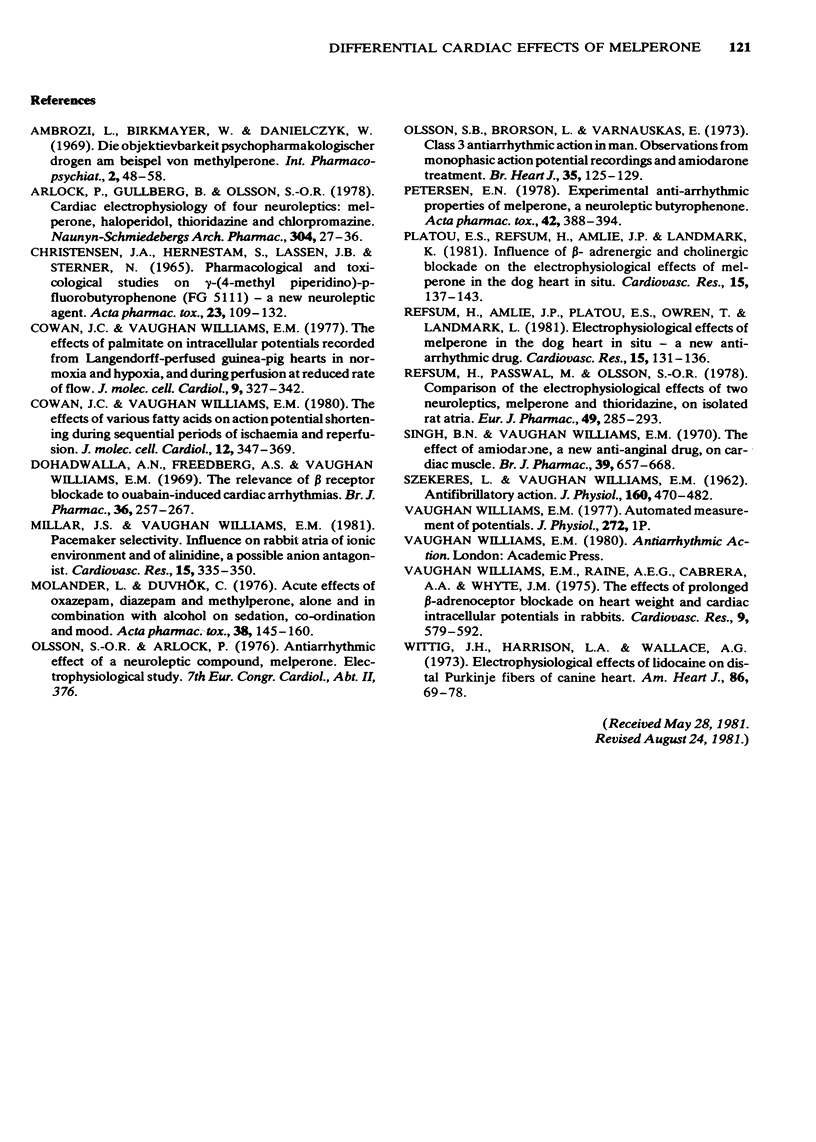
Selected References
These references are in PubMed. This may not be the complete list of references from this article.
- Arlock P., Gullberg B., Olsson S. R. Cardiac electrophysiology of four neuroleptics: melperone, haloperidol, thioridazine and chlorpromazine. Naunyn Schmiedebergs Arch Pharmacol. 1978 Aug;304(1):27–36. doi: 10.1007/BF00501374. [DOI] [PubMed] [Google Scholar]
- Christensen J. A., Hernestam S., Lassen J. B., Sterner N. Pharmacological and toxicological studies on gamma-(4-methylpiperidino)-p-fluorobutyrophenone (FG 5111)--a new neuroleptic agent. Acta Pharmacol Toxicol (Copenh) 1965;23(2):109–132. doi: 10.1111/j.1600-0773.1965.tb03578.x. [DOI] [PubMed] [Google Scholar]
- Cowan J. C., Vaughan Williams E. M. The effects of palmitate on intracellular potentials recorded from Langendorff-erfused guinea-pig hearts in normoxia and hypoxia, and during perfusion at reduced rate of flow. J Mol Cell Cardiol. 1977 Apr;9(4):327–342. doi: 10.1016/s0022-2828(77)80038-2. [DOI] [PubMed] [Google Scholar]
- Cowan J. C., Williams E. M. The effects of various fatty acids on action potential shortening during sequential periods of ischaemia and reperfusion. J Mol Cell Cardiol. 1980 Apr;12(4):347–369. doi: 10.1016/0022-2828(80)90047-4. [DOI] [PubMed] [Google Scholar]
- Dohadwalla A. N., Freedberg A. S., Vaughan Williams E. M. The relevance of beta-receptor blockade to ouabain-induced cardiac arrhythmias. Br J Pharmacol. 1969 Jun;36(2):257–267. doi: 10.1111/j.1476-5381.1969.tb09503.x. [DOI] [PMC free article] [PubMed] [Google Scholar]
- Millar J. S., Williams E. M. Pacemaker selectivity: influence on rabbit atria of ionic environment and of alinidine, a possible anion antagonist. Cardiovasc Res. 1981 Jun;15(6):335–350. doi: 10.1093/cvr/15.6.335. [DOI] [PubMed] [Google Scholar]
- Molander L., Duvhök C. Acute effects of oxazepam, diazepam and methylperone, alone and in combination with alcohol on sedation, coordination and mood. Acta Pharmacol Toxicol (Copenh) 1976 Feb;38(2):145–160. doi: 10.1111/j.1600-0773.1976.tb03107.x. [DOI] [PubMed] [Google Scholar]
- Petersen E. N. Experimental anti-arrhythmic properties of melperone, a neuroleptic butyrophenone. Acta Pharmacol Toxicol (Copenh) 1978 May;42(5):388–394. doi: 10.1111/j.1600-0773.1978.tb02222.x. [DOI] [PubMed] [Google Scholar]
- Platou E. S., Refsum H., Amlie J. P., Landmark K. Influence of beta-adrenergic and cholinergic blockade on the electrophysiological effects of melperone in the dog heart in situ. Cardiovasc Res. 1981 Mar;15(3):137–143. doi: 10.1093/cvr/15.3.137. [DOI] [PubMed] [Google Scholar]
- Refsum H., Amlie J. P., Platou E. S., Owren T., Landmark K. Electrophysiological effects of melperone in the dog heart in situ - a new antiarrhythmic drug. Cardiovasc Res. 1981 Mar;15(3):131–136. doi: 10.1093/cvr/15.3.131. [DOI] [PubMed] [Google Scholar]
- Refsum H., Passwal M., Olsson S. O. Comparison of the electrophysiological effects of two neuroleptics, melperone and thioridazine, on isolated rat atria. Eur J Pharmacol. 1978 Jun 1;49(3):285–293. doi: 10.1016/0014-2999(78)90104-8. [DOI] [PubMed] [Google Scholar]
- Singh B. N., Vaughan Williams E. M. The effect of amiodarone, a new anti-anginal drug, on cardiac muscle. Br J Pharmacol. 1970 Aug;39(4):657–667. doi: 10.1111/j.1476-5381.1970.tb09891.x. [DOI] [PMC free article] [PubMed] [Google Scholar]
- Szekeres L., Williams E. M. Antifibrillatory action. J Physiol. 1962 Mar;160(3):470–482. doi: 10.1113/jphysiol.1962.sp006860. [DOI] [PMC free article] [PubMed] [Google Scholar]
- Williams E. M., Raine A. E., Cabrera A. A., Whyte J. M. The effects of prolonged beta-adrenoceptor blockade on heart weight and cardiac intracellular potentials in rabbits. Cardiovasc Res. 1975 Sep;9(5):579–592. doi: 10.1093/cvr/9.5.579. [DOI] [PubMed] [Google Scholar]
- Wittig J., Harrison L. A., Wallace A. G. Electrophysiological effects of lidocaine on distal Purkinje fibers of canine heart. Am Heart J. 1973 Jul;86(1):69–78. [PubMed] [Google Scholar]


